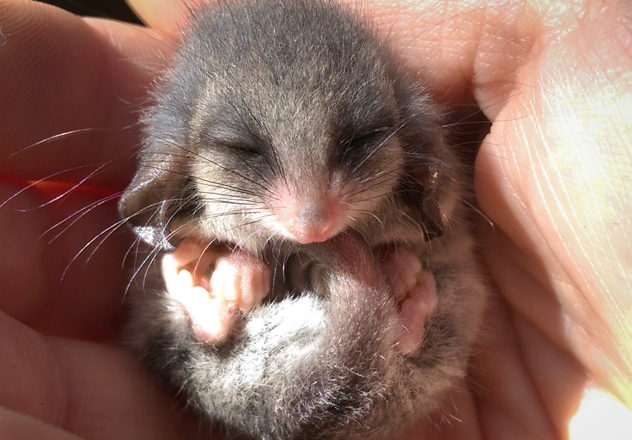
This little eastern pygmy possum is doing a good impression of winter hibernation.
Our June science quiz has arrived and it’s the beginning of winter in Australia. Hibernation season has begun for our cutest of cute pygmy possums. Did you know the eastern pygmy possum holds the title for the longest hibernation of any mammal in the world? Super impressive!
Pygmy possum power!
The pygmy possum is our go-to animal for this cool June science quiz. We want to fill your winter hibernation with loads of interesting facts and science-based wisdom. We hope you’ve been reading up on all our mind-candy this month. So, settle in and get comfy on the couch, or snuggle into your doona, and let’s get our quiz on!
Okay, possums… ready, set, quiz!
#1. What is tropospheric ozone and where is it measured?
Tropospheric ozone is an air pollutant and greenhouse gas. It’s also one of six major air pollutants for national air quality standards. It is measured in Hobart aboard the RV Investigator.
#2. What have we recently used our cold spray technology for?
Cold spray forms part of the repair procedure for submarine components by adding metallic coatings without compromising structural integrity.
#3. What animal spreads Ehrlichia canis to dogs?
The bacteria Ehrlichia canis was present in samples from dogs in WA’s Kimberley region suffering a severe tick fever called Ehrlichiosis.
#4. How many new species of sea sponge were recently discovered in Australian waters?
Seventeen new species of carnivorous sea sponge were discovered 4000 metres below the surface of the sea.
#5. What kind of stent is made-to-measure?
Our new 3D printed stent is made-to-measure. It saves hospitals having to stockpile loads of different sizes.
#6. Who first discovered ‘pulsars’?
Dame Jocelyn Bell Burnell first detected rapidly spinning neutrons known as ‘pulsars’ as a postgraduate student in 1967.
#7. How can we track changes in ocean health?
We use markers from microbial DNA to measure changes to the DNA sequences. We can identify microbes and nearby marine life from a bucket of sea water!
#8. What is one way you can improve your health while learning?
Maintaining and hanging out in green spaces either in your own yard or within your community has a positive impact on your mental and physical health. Plus you learn about the plants and animals in your local environment.
#9. Which animal have citizen scientists helped researchers monitor in the wake of recent bushfires?
Citizen scientists in South Australia identified 15,000 images to help researchers see how the Kangaroo Island dunnart is recovering after the fires.
#10. What temperatures can our new fire-resistant resin withstand?
This new resin can withstand temperatures over 1000° C. It’s tougher than existing thermal coatings making it perfect for cladding fire-resistant ships.
Results
Well, look who’s been keeping up with their science news, you nailed it!
Too bad. Make sure you read up for next month’s science quiz!
We are super excited to bring you more awe-inspiring science as we move into the second half of the year. And we hope you can get a perfect score in the next quiz if you didn’t win the crown this time. Stay chill, there is always next month!





11th July 2020 at 11:41 pm
Love this new quiz
1st July 2020 at 12:36 pm
missing a comma: Okay[,] possums… ready, set, quiz!
1st July 2020 at 10:34 am
Thank you for your emails. I really enjoy the articles. I want to learn more. Would like more information about flora both native and plants from other parts of the world. Also like more info on birds native and other.